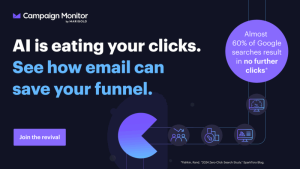— August 1, 2017

Hillyne / Pixabay
A widely held but false belief or idea.
If you look up the word ‘Myth’ in a dictionary, that’s what you’ll be told it is.
So simple.
Correction – deceptively simple.
In a world when everything has moved to the digital realm, employee advocacy is the latest buzzword in marketing circles. But given that the concept of advocacy marketing, especially employee advocacy is still in its nascence, most brands are still trying to figure out the most effective method of executing it as a viable marketing strategy.
In the process of experimentation, certain assumptions have lingered on despite being proven incorrect. That’s why, even though interest in employee advocacy has grown over 200% in the last three years, there are still a lot of brands out there that remain apprehensive about the concept.
We aim to debunk 7 misconceptions about employee advocacy –
1. Why would employees want to share work related content on their personal pages?
Let’s just get this one out of the way.
Statistically speaking, 50% of employees are already talking about their employers on social media. And why wouldn’t they? Social media gives people a chance to create their own personas.
Whether it is just plain pride for the organization they work for, or the ambition to become a thought leader in their field, there is no reason an employee would definitely not want to share brand content with their peers and personal networks.
Of course, there might be some initial hiccups. But again, it’s most likely to be due to the lack of a proper training on the subject.
With proper instruction and guidance, there is no reason why you employees wouldn’t want to share company content.
2. My customers aren’t even social; how is this isn’t relevant to my business?
Common perception will tell you that employee advocacy may work well for B2C companies. Employees of a local bakery can rake in more customers than a flyer or an emailer.
But what happens when it comes to B2B companies? You’re probably thinking that your C-level decision makers aren’t even on social media.
Wrong.
There are over 60 million C-level influencers and decision makers on LinkedIn. What’s stopping your employee shares from reaching them? After all, content shared by employees goes 561% further than when it’s shared only on the company page.
Just as how we now realize that social media is not only a place for teenagers to while away their time, but a thriving way to do business, we have to come to realize that everyone is social these days.
3. How do I sustain an employee advocacy program? It’s impossible to create sufficient content!
Nothing is impossible. Yes, content plays a pivotal role in managing and sustaining an employee advocacy program. But curating it doesn’t have to be a complex and time-consuming process. Did you know that your employees are a great source of content?
Not to step on the toes of the next myth we’re going to bust, but you might want to consider assigning the task of content curation to a few employees, or the administrator of the program. Tying up with 3rd party industry bloggers is also a great option of curating content although it might be a tad tough on a budget.
Overcome this challenge by investing in a good employee advocacy platform. Not only does it curate great content from top sources, but it also is a lot easier on the pocket than paid influencers.
4. Won’t productivity decrease if too much emphasis is placed on social sharing?
Even though social media has been around for as long as most teenagers, we still have this notion that any time spent on social media is a waste.
We’re not denying that social media can consume a lot of time. But employee advocacy doesn’t have to. It’s important to realize the benefits you can rake in (brand messages are re-shared an average of 24x when distributed by an employee vs. the brand, just saying) in just a few minutes.
In order to curb loss of productivity, encourage advocacy as an after-hours or break time activity. Get a few highly influential and popular employees on board with this concept. You know the kind. Every office has them. The rest will soon follow suit.
Employee advocacy platforms that enable one-click sharing are a great way to share content with a minimal time investment.
5. Employees can share content directly from company pages. Why do I need a program?
This one’s different from the rest in a way that it doesn’t disregard the brilliance of the concept completely. It just says that there’s no need for a formal structure. Boy, are the haters wrong on this one.
The reason why employee advocacy works so well is because of the personal connection your employees have with their networks. Yes, you could make it mandatory for your employees to hit the share button every time you publish new content, and that might even work… for a while. You’re not going to be able to sustain it. Trust us. We know.
With the proper motivation and relevant content, employees will embrace the concept and be more likely to stick around in the long run.
6. Can’t advocacy marketing potentially destroy my brand’s reputation?
Read this myth as – the ramifications of no official employee advocacy program.
A little knowledge can be damaging at its best and dangerous at its worst. Without proper training, your employees will not have an understanding of the vision and the purpose you have for the program.
Poor and inexperienced program managers and limited content are to blame for this myth. As long as your employees are well informed and have interesting content that’s relatable for them to share, you’re good to go.
7. There’s no way to measure if the program is a success or failure.
Nothing, and we mean nothing, will get the green light if success can’t be proven. Thank heavens for employee advocacy tools that account for real-time reporting.
We know how much the numbers mean to your cranky CMO. We get it; that’s all he cares about.
But all is not lost. With real time reporting on impressions, click rates, page likes and a whole lot more, employee advocacy tools like SocioAdvocacy are becoming a big hit.
So what do we learn from these myths?
We learn for sure that little knowledge is a dangerous thing. We also learn that there’s a lot of planning and effort that goes into something deceptively simple. And lastly, we learn that some things are best left to the experts.
SocioAdvocacy has helped several Fortune 500 companies master the art of employee advocacy. The new and improved platform, endowed with self-serve is now available with tailored plans to suit businesses of all strengths. Visit the website and request a free trial to learn more.
Business & Finance Articles on Business 2 Community
(42)








